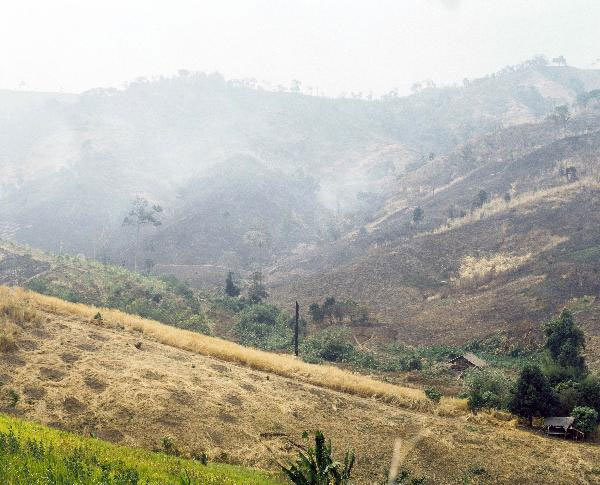Rate of global deforestation accelerating
 0 Comment(s)
0 Comment(s) Print
Print E-mail
China.org.cn, December 1, 2011
E-mail
China.org.cn, December 1, 2011
The rate of global deforestation, mainly the conversion of tropical forests to agricultural land, averaged 14.5 million hectares a year between 1990 and 2005, according to a satellite-based survey released?Wednesday by the United Nations Food and Agriculture Organization (FAO).
 |
|
Forest clearing for agriculture |
The findings of the global remote sensing survey show that the world's total forest area in 2005 was 3.69 billion hectares, or 30 per cent of the global land area.
Worldwide, the net loss of forest area between 1990 and 2005 was not as great as previously believed, since gains in forest areas are larger than previously estimated, according to the survey.
The net loss – when losses of forest cover are partially offset by afforestation or natural expansion – totalled 72.9 million hectares, or 32 percent less than the previous figure of 107.4 million hectares. In other words, the planet lost an average of 4.9 million hectares of forest per year, or nearly 10 hectares of forest per minute over the 15-year period.
The new data also show that the net loss of forests accelerated, increasing from 4.1 million hectares per year between 1990 and 2000 to 6.4 million hectares between 2000 and 2005.
The figures are based on the most comprehensive use yet of high-resolution satellite data to provide a sample of forests worldwide. They differ from previous findings of the FAO Global Forest Resources Assessment last year, which were based on a compilation of country reports that used a wide variety of sources.
"Deforestation is depriving millions of people of forest goods and services that are crucial to food security, economic well-being and environmental health," said Eduardo Rojas-Briales, the FAO Assistant Director-General for Forestry.
"The new, satellite-based figures give us a more consistent, global picture, over time, of the world's forests. Together with the broad range of information supplied by the country reports, they offer decision-makers at every level more accurate information, and underscore the need for countries and organizations to urgently address and halt the loss of valuable forest ecosystems," he added.
Between 1990 and 2005, the loss of forests was highest in the tropics, where just under half of the world's forests are located. Net losses in this region averaged 6.9 million hectares per year.
The highest rate of conversion of forest land use to other, unspecified, land uses for both periods was in South America, followed by Africa. Asia was the only region to show net gains in forest land-use area in both periods.
Deforestation occurred in all regions, including Asia, but the extensive planting that has been reported by several countries in Asia – mainly China – exceeded the forest areas that were lost.





